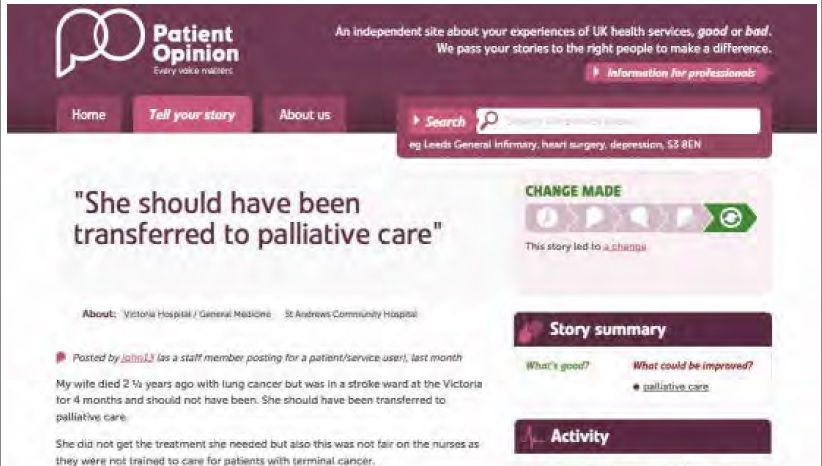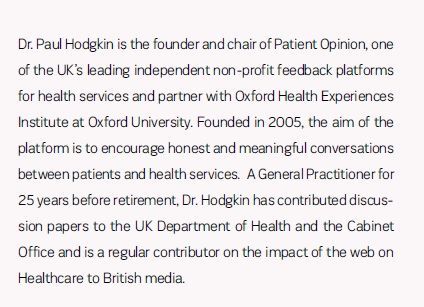HealthManagement, Volume 15 - Issue 3, 2015
During the 2000s, England’s National Health Service spent an extra $1.5 billion per year in an attempt to bring its information systems into the 21st century. Over the decade that followed we spent around $15 billion. That’s a lot of money and there has been much debate about what all this money delivered. But there is an equally interesting question that is rarely asked: How much did ordinary people spend over this same decade on their own smartphones, PCs, laptops and broadband connections? If we assume that each household spent a rather modest $600 per year and multiply that by the 25 million households across England for example, you find that the citizens spent around £150 billion over the same decade.
So citizens outspent the health service by a margin of ten to one on their digital infrastructure. Not what you were expecting perhaps but instructive. In digital terms, individual citizens are drawing farther ahead of the big hierarchical organisations that deliver goods and services (if you doubt this just ask yourself whether the kit you use at home is generally better or worse than the stuff you have to use at work).
Put another way, you could say that it has been much easier for citizens to access the benefits of Moore’s Law, the obser vation that data density has doubled approximately every 18 months, than it has been for big organisations, especially healthcare organisations. Indeed the last 20 years has progressively placed the entire means of digital production at the disposal of pretty much anyone.
Marx said that it would take a revolution before the masses got their hands on the means of production but it turns out that Steve Jobs and Bill Gates were happy to sell the digital means of production to us all for a very reasonable $300. So now we’ve got the revolution. ‘Voice’ has been democratised.
Let’s use one example of the new functionality that citizens now have at their fingertips – the ability to have a public voice - to explore two different ways of responding to this. In the olden days – also known as the 20th century - only elites had access to a public voice. The rest of us were limited to the occasional letter to the newspaper. Now of course everyone can Tweet about your services, join a Facebook group about your institution or use Instagram to tell their friend just how clean – or dirty – your toilets are. The standard healthcare response to this democratisation of public voice is to treat social media as just another form of feedback. More data in, chomp it up as another form of Big data, shove the output in dashboards along with all your other Key Performance Indicators and respond with wary formality.
So far, so familiar. But having a public voice can go much further. With Patient Opinion, the not-for-profit site that I founded, patients, carers and staff, can all s hare t heir e xperience o f h ealth and social care services across the UK. Staff get automatic alerts to relevant stories with authors getting a response about 60 percent of the time. Ten percent of stories result in an improvement being made.

The transparency of Patient Opinion makes it work. For example, you click on the Activity button next to the story and you can see that X people at Y institutions have opened the email alert that was sent to them. In addition, you can see how many members of the public have read it to date. This obviously reassures the author that their contribution has been heard. Much more importantly, it increases the power of their voice as staff and significant players across the local health economy can read it too.
Healthcare institutions tend to think that this kind of structured public conversation is just another form of feedback. It isn’t. It’s a way to construct new types of relationships with the people you are treating. Additionally, because each conversation is read several hundred times over the subsequent year, how you conduct yourself in these conversations is a powerful way of shaping your institution’s reputation. Around five per cent of stories on Patient Opinion are highly critical but the public are now pretty sophisticated about online reviews. They know that some people have axes to grind, that hospitals and clinics have to deal with emergencies and that healthcare is more complicated than staying in a hotel. So they treat the story itself with an element of reserve. By contrast your response is the real deal, evidence of whether your institution cares or is made up of faceless bureaucrats.
The point here is that the geography of the platform has a powerful effect on how people behave. Twitter has a geography that does little to inhibit trolls. By contrast Patient Opinion uses transparency to encourage staff and institutions to be more responsive to patient feedback.
One
last point. There are two classic ways for the user of any services to try and
change things: exit and voice. Exit is all about taking your custom elsewhere,
about choice and market forces. Voice is about trying to change things by
giving feedback, complaining, suing or volunteering. Over the previous decades,
many healthcare systems have experimented with exit by extending choice and
increasing market incentive whilst voice has remained a whisper at t he policy
t able, more honoured in the breach than in reality. All this is changing. The
cost of markets is static or rising whilst the cost of voice is dropping like a
stone. These economics mean that developments in your healthcare services in
the coming years will be greatly influenced by patients collaborating together
with you - or against you.



